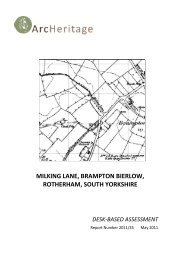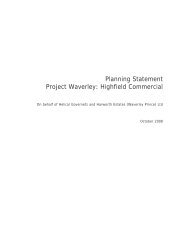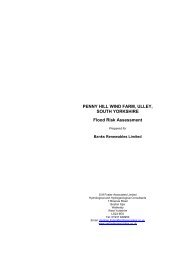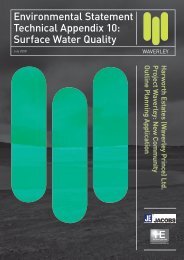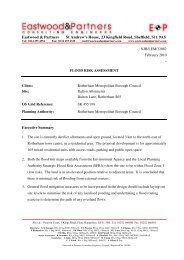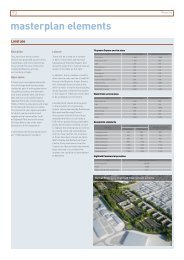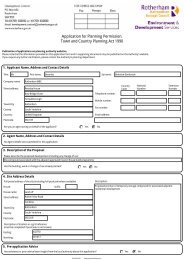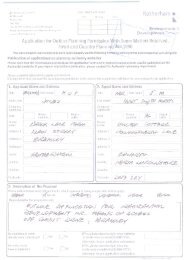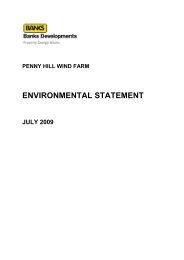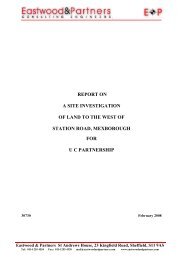environmental statement - Rotherham's Online Application for ...
environmental statement - Rotherham's Online Application for ...
environmental statement - Rotherham's Online Application for ...
You also want an ePaper? Increase the reach of your titles
YUMPU automatically turns print PDFs into web optimized ePapers that Google loves.
water, fungi, protected mammal, breeding birds and rare/threatened<br />
invertebrate data, and is also registered as a Natural History Heritage Site<br />
(see below). Protected species records provided by RMBC which are<br />
within 2km of the Penny Hill site (GCN and water vole) are from the Ulley<br />
Country Park area. Spring Wood bounds the south west of the Penny Hill<br />
study area and is registered as a Natural History Heritage Site. Natural<br />
History Heritage site registrations include ancient woodlands, breeding<br />
birds, ancient/species-rich hedgerows, key habitats, presence of badgers<br />
and country parks. Morthen Brook is registered as a Natural History<br />
Heritage Site, this includes the area around Swallow Mills pond that is<br />
within the study area. Other Natural History Heritage Sites within 2km of<br />
the centre of the study area are M1-M18 link road verge, Pea Carr Wood,<br />
Sheep Dike, Lane Wood, RBG1, Turnshaw Plantation, Brampton Common<br />
(also a Candidate Local Wildlife Site) and Long Road, Brampton.<br />
Phase 1 Habitat Survey<br />
7.26 The study area comprises predominantly arable land dissected by<br />
species-poor but generally intact hedgerows. There are some „wildlife<br />
strips‟ and „grass field margins‟ between the crops and field boundaries,<br />
some small areas of improved and semi-improved grassland, and two<br />
small areas of woodland. There are a number of drainage ditches, with<br />
the two main flowing watercourses being the northern and southern<br />
branches of Ulley Brook. There is one farm, Ulley Beeches which is within<br />
the study area.<br />
7.27 Similar habitat surrounds the study area. Further to the north and east is<br />
the M1 which bounds the east of the Penny Hill study area. Further to the<br />
south are the villages of Aston and Aughton, with Ulley village, reservoir<br />
and country park further to the west.<br />
Bat Survey<br />
7.28 The habitat supported within the study area includes arable fields which<br />
are surrounded by predominantly intact hedgerows and as such the<br />
habitat overall is considered to be of low to medium quality <strong>for</strong> bats. There<br />
is some habitat suitable <strong>for</strong> roosting including standard trees, and some<br />
farm buildings. As the hedgerows are predominantly intact, their suitability<br />
as commuting routes is high, however the surrounding arable fields<br />
provide low quality <strong>for</strong>aging habitat. The presence of the two<br />
watercourses (also drainage ditches) will improve the limited <strong>for</strong>aging<br />
potential.<br />
7.29 Survey ef<strong>for</strong>t was determined using results from the habitat assessment<br />
and using Natural England Guidance (2008). Under this guidance the<br />
study area is likely to be a low to medium risk site, as the study area is<br />
small, has few potential roost sites, and was determined to present a low<br />
to medium likely threat to bats. The surveys would also in<strong>for</strong>m the site<br />
layout design process, such as implementing large buffers around<br />
potential roost sites to further reduce the risk level at this site.<br />
175<br />
Penny Hill Wind Farm<br />
Environmental Statement



